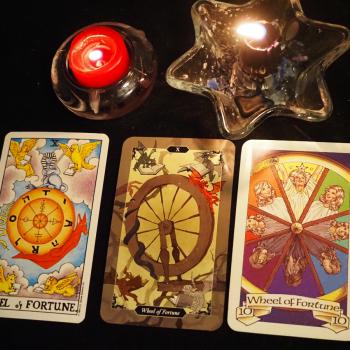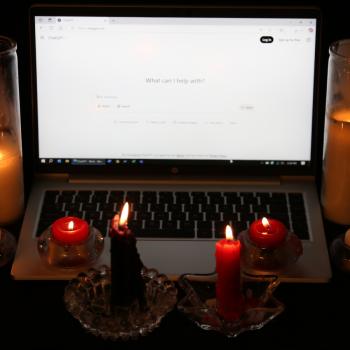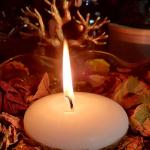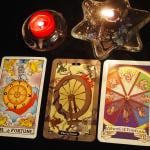Rehearsing this year’s Celebration of Spring – making sure the plan is clear and the leaders know what they’re going to do
Catharine left a comment on my post on Ecstatic Ritual, asking “what do you think has made your strongest rituals strong?” That’s a good question, and here’s my attempt at an answer.
A clear intention. Before trying to decide how to do a ritual, figure out what you want to accomplish. Some rituals are simply intended to be celebratory: to mark the changing of the seasons or to commemorate an important event. Some are primarily worshipful: to honor our goddesses and gods and to commune with them. Some are for magical workings, or divination, or initiations. Different intentions will call for different ritual styles – a festive Beltane ritual will be very different from a Samhain journey to the Otherworld.
A clear plan. Once you decide what you’re going to do, how are you going to do it? Are you going to cast a circle? With an athame or a wand or a staff or your finger? Are you going to psychically project it or scribe it on the ground? Sweep first? Bless with salt water (earth and water) and incense (fire and air)? Making three separate circumambulations or three people following each other?
There are many ways to do something as simple as casting a circle. Add in all the other ritual elements and you have dozens if not hundreds of decisions that have to be made. Planning ahead removes mundane distractions and allows you to focus on the intent and the flow of the ritual.
Competent, confident leader(s). If you’re working with two or three or four people then maybe everyone is a leader, but if your circle is more than a handful then one or two people are going to have to lead. You can call them High Priestess and High Priest or Presiding Druid or Worship Coordinator, they can have most of the speaking parts or just the transitions, but somebody has to drive the bus.
A good ritual leader exudes confidence and knows how to quickly and quietly get things back on track when Coyote makes his inevitable appearance. A good ritual leader isn’t arrogant – she knows her job isn’t to call attention to herself, it’s to facilitate a spiritual experience by everyone and to make the magic work.
An engaged, committed circle. You can have the best ritual leader in the world, but if people come into the circle upset over traffic or mad at the guy in the East quarter or worried that people are going to think they’re not dressed properly then the ritual isn’t going to be as good as it could be. That’s why most Pagan rituals begin with a cleansing and/or a ground-center-and-merge meditation. Good ritual involves changing consciousness, and the most important consciousness change is setting the mundane world aside for an hour and becoming a part of something magical. Once that’s accomplished it’s much easier to get everyone pulling in the same direction.
A willingness to take risks. There are smart risks and there are dumb risks. Walking out to lead a public ritual with no preparation is a dumb risk. Trying something that’s just a bit harder than you’ve done before is a smart risk. So is opening yourself to the Divine and listening for the call that you need to step up and speak out. And so is committing yourself to a journey you believe is your life’s work even though you can’t see exactly how to get from here to there.
Others may have had different experiences, but when these five things are done well, the rituals I’ve been in have been very strong.
















